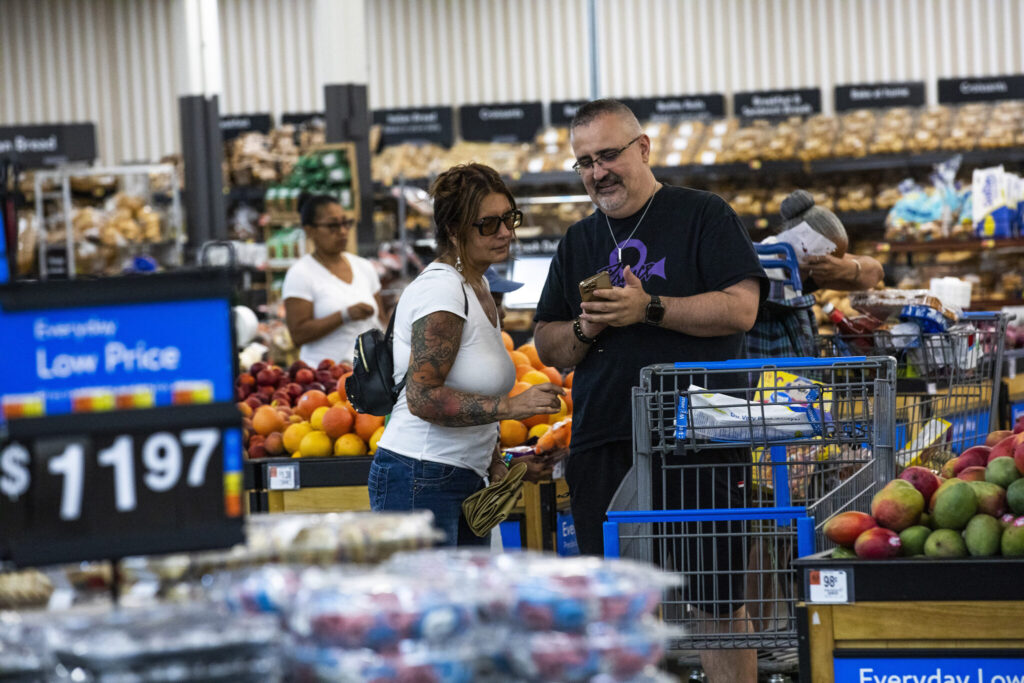U.S. inflation rate 2024/ Federal Reserve interest rate cuts/ consumer prices/ inflation and economy/ housing costs/ core inflation/ gas prices decline/ Newslooks/ WASHINGTON/ U.S. inflation has reached a three-year low, with consumer prices rising just 2.5% in August compared to the previous year. The cooling inflation provides relief to consumers and strengthens the case for the Federal Reserve to cut interest rates in its upcoming meeting. Gas prices, used car costs, and grocery prices all saw declines or minimal increases. As inflation continues to fall, the Fed is shifting its focus toward supporting the job market and economic growth. The latest data also carries political implications as inflation remains a key issue in the presidential election.

Key Takeaways:
- U.S. inflation dropped to 2.5% in August, marking the lowest level in three years.
- Core inflation, excluding food and energy, held steady at 3.2% year-over-year.
- Gas prices declined by 0.6%, and used car prices fell 10.4% from last year.
- Grocery prices remained flat from July to August, up just 0.9% over the past year.
- The Federal Reserve is expected to cut interest rates next week as inflation cools.
- Housing costs remain a concern, but rents for new leases are rising more slowly.
- Wage growth has slowed to 3.5%, reducing inflationary pressures from labor costs.
- The inflation trend could impact the presidential election, as both Kamala Harris and Donald Trump highlight their economic plans.
US Inflation Hits 3-Year Low as Federal Reserve Eyes Interest Rate Cuts
Inflation in the U.S. reached a three-year low in August, with year-over-year price increases continuing to decline. This development is expected to pave the way for the Federal Reserve to reduce interest rates in an effort to bolster economic growth.
The latest report from the Labor Department on Wednesday showed consumer prices rose 2.5% in August compared to the previous year, down from 2.9% in July. This marks the fifth consecutive decline in annual inflation and represents the lowest rate since February 2021. On a month-to-month basis, prices rose only 0.2% from July to August.
When excluding food and energy, which tend to have volatile prices, core inflation rose 3.2% year-over-year in August, maintaining the same pace as July. Month-to-month, core prices increased 0.3%, slightly higher than July’s 0.2% increase. Core prices are closely monitored by economists as they offer a clearer view of long-term inflation trends.
Gradual Relief for Consumers
The easing of inflation has provided welcome relief for U.S. consumers, who have grappled with soaring costs for essentials like food, gas, and rent since the pandemic began. Inflation reached a peak of 9.1% in mid-2022, the highest in four decades.
A notable factor in the recent decline is falling gas prices, which dropped 0.6% from July to August and are down 10.6% compared to a year ago. Prices for used cars also fell by 1% last month and have plunged 10.4% over the past year. Additionally, grocery prices remained flat from July to August, reflecting a cooling trend, although they remain significantly higher than pre-pandemic levels.
Over the past year, grocery prices have risen only 0.9%, close to the typical pre-pandemic rate of food inflation.
Federal Reserve Prepares for Rate Cuts
The continued decline in inflation is bolstering confidence among Federal Reserve officials, who believe the U.S. economy is on track to meet their 2% inflation target. As inflation falls, the Fed is shifting its focus to sustaining the job market, which has shown signs of cooling. To support economic growth, the central bank is expected to cut interest rates next week, likely by a modest quarter-point.
This anticipated rate cut would mark a significant shift from the Fed’s current strategy of maintaining interest rates at a 23-year high. Lower interest rates are expected to reduce borrowing costs for consumers and businesses, including for mortgages, auto loans, and credit cards.
Political Implications
With the presidential election approaching, the inflation report could have political consequences. Former President Donald Trump has criticized Vice President Kamala Harris for inflation, blaming her for the price spikes that began in early 2021. Harris has proposed housing subsidies and a federal ban on price-gouging for groceries in response. Meanwhile, Trump has promised to increase energy production to further reduce inflation.
Housing and Wage Growth
Despite overall inflation cooling, housing costs remain a challenge. From July to August, rents and housing prices increased more than they had in previous months, contributing to the slight uptick in core inflation. Federal Reserve officials are watching these costs closely, though they expect housing prices to decline over time.
According to real estate firm Redfin, median rent for new leases rose by only 0.9% in August, reaching an average of $1,645 per month. However, the government’s inflation measure includes all rents, even for long-term tenants, so the slowdown in new rental prices may take time to appear in official data. Government figures show that rental costs have increased 5.2% over the past year.
On the wage front, average paychecks have been growing at an annual rate of about 3.5%, down from the 5% growth rate seen two years ago. While still solid, this slower wage growth eases the pressure on businesses to raise prices to cover labor costs, further helping to keep inflation in check.
Economic Outlook
Fed Chair Jerome Powell noted in a speech last month that inflation was under control, and the labor market was unlikely to reignite inflationary pressures. However, there are concerns that consumer spending, which has driven the economy for the past three years, might soon slow down.
Consumers are increasingly relying on debt to maintain their spending, leading to rising credit card and auto loan delinquencies. A potential drop in spending could prompt employers to pause hiring or even cut jobs, posing new challenges to the economic recovery.







